Reviews
Ubaldo Ragona & Sidney Salko
USA, 1964
Credits
Review by Michael Nordine
Posted on 25 June 2011
Source Netflix Instant
Related articles
Reviews
The Last Man on Earth by Thomas
Categories Vincent Price
You freaks! I’m a man… the last man!
The post-apocalyptic genre may well be my favorite, not only for the works it’s produced but also for those it still could. Such novels, movies, and games as The Road, Mad Max, and the Fallout series can be and are set any amount of time after their particular manmade or natural cataclysm has taken place and focus on whatever remnants of civilization they so choose. It’s this aspect of the genre - that it tends to be more focused on how we start society anew than on its initial breakdown - that I find most fascinating, as well as what makes it such a poignant tabula rasa. Richard Matheson’s 1954 novel I Am Legend is a good example, not least because its three major film adaptations - The Last Man on Earth, The Omega Man, and I Am Legend - are so markedly different from one another that they hardly seem to have sprung from the same source material.
The Last Man on Earth opens the way many films of its kind do: with establishing shots of the empty streets and vacant buildings of a major city. All is quiet as the wind rustles through overgrown grass and the sun rises. And then the bodies appear. Not many, only a few here and there, but more than enough to make it abundantly clear that Robert Morgan is very much alone—except he isn’t. Morgan, who spends his days searching for garlic and impaling vampire-zombies with wooden stakes, is hunted by those same creatures at night. Slow-moving reminders that death is literally at his doorstep, they have as a ringleader a former friend of Morgan’s who lazily shouts “It’s Morgan—get him!” while futilely trying to break through the windows. Though physically unimposing, he and his brood incite fear because of the strange neither-nor state between life and death they inhabit. Reminders of his past, they would also be a warning of what he might become were he not immune to the disease (dubiously explained by his having been bitten by a bat years earlier in Panama), a blessing as well as a curse: Morgan will never become one of them, but he’s also nothing like any other living creature left on earth.
Ubaldo Ragona and Sidney Salko’s film most distinguishes itself in the two directors’ focus on the boredom of survival. Early scenes in which Morgan scavenges for supplies and fortifies his home are quite detailed but his first monster-killing spree is reduced to a brief montage. “Another day to live through,” he says via voiceover when first we meet him, and already we know how world-weary he is. Despite this weariness, it’s precisely because of his insistence on continuing to go through the motions day after day that Morgan is indeed the last true man: he doesn’t grow a beard, doesn’t let his home fall into disrepair, and in general maintains the appearance and demeanor of his pre-plague life. In short, he does everything possible to be in no way like the creatures he’s gotten very good at killing. And in many ways he’s not so different from many middle-aged and elderly men: he lives alone, thinks out loud, and weeps at the sight of home movies from a happier time.
After Morgan watches one of these videos, the film transitions into a lengthy flashback sequence accounting for much of its second act and revealing how things came to be as they are. Morgan worked as a scientist and lived an idyllic life in the suburbs with his wife and young daughter. Like Morgan’s voiceover narration during the first act, this flashback is perhaps too expository for its own good, but it nevertheless paints a fascinating portrait of the dissolution of post-World War II optimism in suburbia. Morgan’s marriage slowly withers, his child is taken first, and eventually only he remains. Though an airborne disease is at the heart of this uprooting, similar, less apocalyptic causes could have produced similar results. His world torn asunder, Morgan is left to pick up the pieces and wearily continue onward for lack of a better alternative.
The Last Man on Earth is at its best when functioning as a metaphor for edging ever-closer to one’s own mortality. Morgan was happy once, but the pandemic of which he’s seemingly the sole survivor reduced him to a shell of his former self. His story is set three years in the then-future but filmed in black and white, an implicit stylistic indicator of how bleak Morgan’s world has become. To be so alone is to call the point of merely surviving to toil another day into question, a devastating condition that shows itself in Morgan’s face. When, late in the film, he finds a stray dog which has somehow survived as long as he has, his elation is obvious. Moments later, he realizes his new companion is infected with the same affliction that wiped out everyone else. “What’s the use?” Morgan asks. He’s seen burying the dog - which is wrapped in a blanket that can’t conceal the stake driven through its heart - in the next scene.
Human ugliness is more than skin-deep here, and Morgan’s ultimate foes aren’t the undead but rather a group of infected-but-treated men and women who consider him an enemy—ironic, considering they’re the only ones left with the capacity for reason and communication. Morgan’s solitude was bad enough when it was thought that his was the last mind capable of such things, and the revelation of these semi-humans’ intent to dispose of him further amplifies it. The Last Man on Earth is indeed about both life and death, creation and destruction, and the fact that each facet is as grim and uninviting as the next is its most chilling statement on the way things once were and the way they might one day become.
More Vincent Price
-
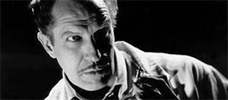
The Tingler
1959 -
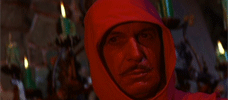
The Masque of the Red Death
1964 -

The Last Man on Earth
1964 -

The Tomb of Ligeia
1964 -

War-Gods of the Deep
1965 -

Witchfinder General
1968 -
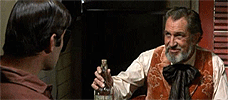
More Dead Than Alive
1969 -

The Abominable Dr. Phibes
1971 -
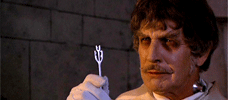
Dr. Phibes Rises Again!
1972 -
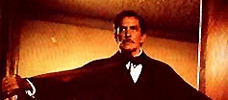
Theatre of Blood
1973
We don’t do comments anymore, but you may contact us here or find us on Twitter or Facebook.



